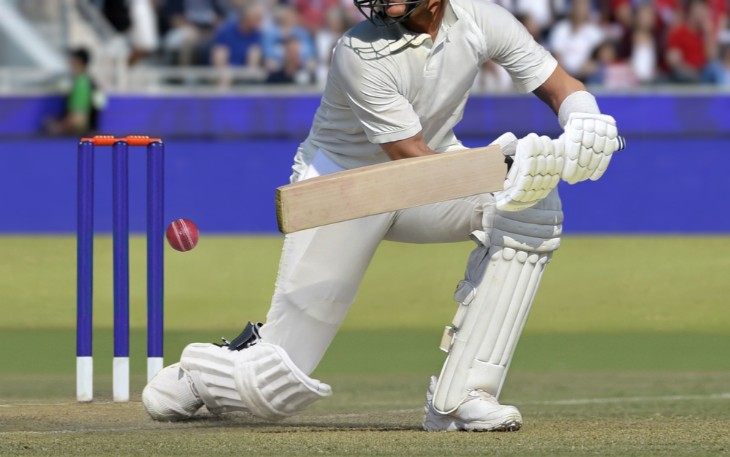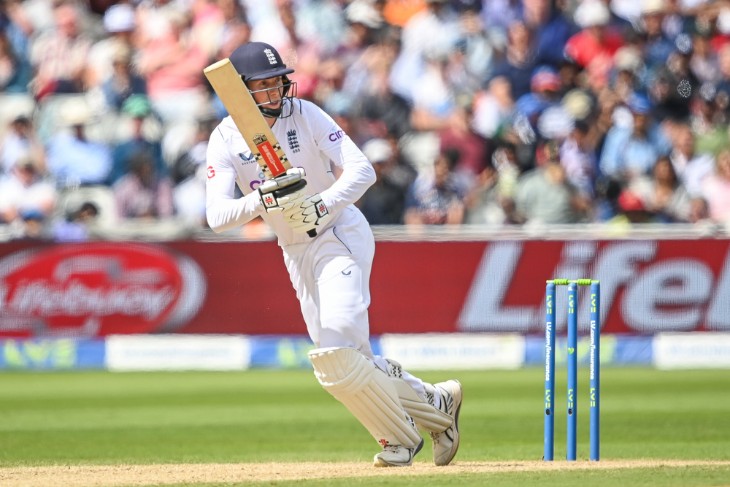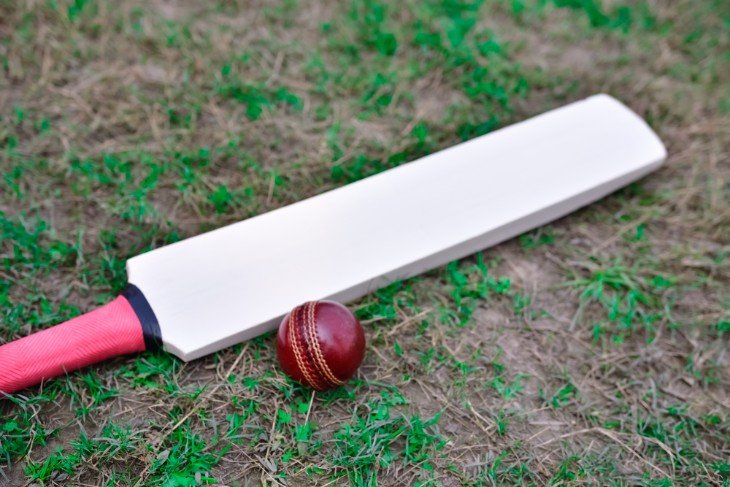Cricket, the world's most revered and passionately played form of sport is about far more than its well-earned reputation for skill and tactics; it also involves some tender love and care for its most essential equipment, i.e. cricket bats. If you are a beginner or an experienced player, it is necessary to know how to repair a bat to maintain its performance and longevity.
This guide will walk you through the steps involved in repairing the common problems such as surface cracks, handle repairs, and blade damage among others that may be encountered in your bat to leave it ready for any game.
Getting to Know the Basics of Cricket Bat Care
Maintaining a cricket bat is crucial if one wants to keep it working properly for longer. When well taken care of, a bat can go a long way in enhancing one’s game as well as saving him/her from frequent replacements. Here are some key points about basic cricket bat maintenance you have got to know.
Firstly, recognize that cricket bats are essentially made from willow which is an organic material requiring regular attention. Drying out of willow causes cracks and damages resulting in this problem. To avoid these challenges, oil your bat at intervals. Apply linseed oil on the face edges and back of the wood but not on the splice part by wicking a thin layer into it keeping your wood flexible while reducing chances of cracking.
Knocking in is another vital element when maintaining bats. This technique involves gentle hitting on the surface using special mallets compacting its fibers making them strong enough against balls during matches hence prolonging their life span's lengthiness Spend lots of hours knocking focusing mostly on the edges including the toe which is extremely important for new pieces since they become ready for actual games by doing this process purposely.
Regular check-ups are another fundamental aspect. Examine your stick carefully after heavy use looking at signs showing wear and tear like splits or cracks developing. Spotting problems early can prevent them from developing into costly repairs.
Lastly, keep your bat safe. Ensure that it doesn't come into contact with any water or moisture and hot temperature by storing it in a cool place. Do not take your bat to very extreme conditions otherwise, it might crack or warp making it inappropriate to leave the stick in moist garages or car boots.
Caring for a cricket bat requires oiling, knocking in a regular inspection and proper storage. By adhering to these easy steps, you will have maintained your bat properly hence its good condition will be preserved and ready for any game or practice.
Step-by-step Bat Fixing Procedure
Step 1: Evaluating the Damage
Check the Surface: Start at one end of the whole thing and go over the entire blade section until reaching the other end where you are looking out for surface cracks or splits also known as fine lines and usually on the face and edges of the wood which ones do you come across? This information will be important when fixing them.
- Inspect Handle: Shift towards a handle next; gently shake it; is it loose? Look for some kind of damage such as cracking or splintering. A firm handle that is complete is great because it helps a lot with grip while batting.
- Toe Examination: The lowermost part of this tool called the toe can be easily damaged mainly if played on hard ground/damp pitches–find cracks, dents etc… Is anything wrong down there? Sometimes the injuries impair balance as well as impact the capacity of our wood.
- Search for Delamination: Delamination happens when the bat peels off in layers. It normally occurs on the bat’s face or edges. But it might not be easy to detect, so look very carefully at it. In case there is any stripping or flaking off, that is a sure sign of delamination.
- Condition Overall: Lastly, consider the condition of the whole bat after all this. Other signs of wear and tear which may require attention should also be looked out for in this case. This includes checking if the grip is okay, seeing if its protective surface has worn away or even checking the stickers for any broken areas.

Step 2: Repairing Surface Cracks
- Clean up the Area: Clean up the split area before you start repairing it by removing any dirt or debris from that place. This will ensure proper sticking of glue in position as otherwise it may not stick properly. A clean surface guarantees success during repair.
- Sand down the Area: Make use of fine-grit sandpaper to lightly sand down over and around where it has cracked respectively. This makes the area smooth while aiding better adhesiveness between glues applied. Be cautious about sanding too much because that could result in further damage being made.
- Apply Glue: For repairing purposes, go for a strong wood adhesive or epoxy resin adhesive; push them into the crack making sure they get inside and split itself completely; use enough glue to fill the entire crack but avoid excessive spilling thereof.
- Clamp Bat together: If possible, hold on to the cracked part with the clamp as your glued side dries up so that there can be a tighter bond and maintain the shape of your bat too leaving it clamped continuously within the period recommended by the glue maker say several hours.
- Remove Extra Glue: Scrape away excess glue once dry using light sandpaper on the same area as was previously done above, to obtain an even finish this stage is important.
- Check again: After drying the glue and removal of excess glue, check the repaired area. Ensure that the crack is sealed and it looks smooth. This is important to ensure that the bat performs well and lasts long.
Step 3: Fixing the Handle
- Remove Old Binding: If your cricket bat handle is loose or damaged, start by removing the previous binding. This could be rubber, strings or tapes. Cut them out without actually cutting into wood thus allowing you to see the handle better and gauge whether it needs fixing.
- Examine for damage: Once you have removed the binding inspect whether there are cracks in the handle, splinters or any wear marks on it. For example, if you find small cracks which are not serious then go ahead to fix them by yourself but if the handles break completely, then take it to an expert who can put in a new one.
- Glue Small Cracks: Use strong wood glue for minor cracks. That is apply glue into these small splits ensuring enough penetration as in wiping away excesses of glue; allow these woods to stick together completely observing what manufacturers prescribed about the drying period.
- Rebind The Handle: Then after allowing it to dry or where there were no cracks re-bind your handle again with a specific cricket bat grip, twine and rubber whichever you prefer most starting from below and going upwards while tightening biding throughout This makes one catch that handle properly hence stabilizing it
- Secure Top Binding: When you reach the topmost part of the handle secure bind using either a small piece of tape or a special ring meant for such bats' handles; this will prevent from unwrapping the entire thing
Step 4: Fixing Damage To The Blade
- Identify the Damage: First, carefully inspect the blade of your cricket bat for any chips, dents or other major damages. This is important as it will help you to know what kind of repair is required. Any damage on the blade can impact the performance of your bat; therefore, it should be dealt with immediately.
- Clean the Damaged Area: Before making repairs, ensure that the affected part is well-cleaned. Get rid of any dirt or loose wood. The reason why you might want to clean has everything to do with ensuring that whatever filler or glue you use sticks properly.
- Apply Wood Filler for Minor Chips and Dents: Use a wood filler for small chips and dents. Choose a filler that matches your bat's colour to obtain an invisible repair job. Let it flow into the damaged section until it becomes level with its sides and then smoothen it using a spatula or fingertip.
- Let the Filler Dry: Follow the manufacturer's instructions for drying time. It's important to let the filler dry completely before proceeding to the next step. This ensures a solid and durable repair.
- Sand the Repaired Area: Once the filler is dry, gently sand the area until it's smooth and flush with the rest of the blade. This step is crucial for maintaining the bat's performance and appearance.
- Re-check the Blade: After sanding, inspect the blade again. Ensure the repaired area is smooth and there are no rough edges. A well-repaired blade will not only look better but will also perform better in the game.
Step 5: Finishing Touches
- Oil the Bat: After repairing your cricket bat, it's important to oil it. Oiling helps maintain the moisture content of the wood. Use linseed oil and apply a light coat to the face, edges, and back of the bat, avoiding the splice and handle. This keeps the wood flexible and reduces the chance of future cracks.
- Allow Oil to Soak In: After applying the oil, leave the bat to rest horizontally for a few hours. This allows the oil to soak in properly. Don't over-oil your bat, as too much oil can make the wood too soft.
- Reapply Anti-Scuff Sheet or Edge Tape: If you had removed an anti-scuff sheet or edge tape for repairs, now is the time to reapply it. These provide extra protection to the bat and can help extend its lifespan. Make sure the sheet or tape is applied smoothly without any bubbles or creases.
- Check the Grip: Inspect the grip of the bat. If it's worn out or damaged, consider replacing it. A good grip provides better control and comfort while batting.
- Final Inspection: Do a final check of your cricket bat. Make sure all repairs are smooth and the bat is in good condition. Look over the entire bat to ensure there are no missed spots or remaining issues.

Enhancing Bat Performance Post-Repair
After repairing your cricket bat, it's essential to take steps to enhance its performance. The most important process here is 'knocking in.' Knocking in is about gently hitting the bat's surface with a special mallet. This step hardens the bat's surface, preparing it for the impact of the ball.
Start by lightly tapping the bat and gradually increase the force. Focus on the edges and the toe, as these areas are most vulnerable. Spend several hours on this process. It might seem long, but it's crucial for your bat's durability and performance.
Another key aspect is oiling the bat. This should be done periodically, not just after repairs. Oiling maintains the moisture of the wood, preventing it from drying out and cracking. Use linseed oil and apply a thin layer on the bat's face, edges, and back. Avoid the splice and handle. Let the oil soak in for a few hours before wiping off any excess. This keeps the bat flexible and ready for action.
Finally, consider the bat's grip. A good grip ensures better control and comfort while playing. If the grip is worn out or damaged, replace it. This can make a big difference in your batting experience.
By following these steps, you ensure that your bat is not only repaired but also enhanced for better performance. Regular maintenance, such as knocking in and oiling, along with a good grip, can significantly improve your bat's longevity and effectiveness in the game. With a well-maintained bat, you can step onto the pitch with confidence, ready to face any bowler.
Preventative Measures for Cricket Bat Care
Taking care of your cricket bat is crucial for its longevity and performance. One of the most important things is how you store it. Always keep your bat in a cool, dry place. Avoid places with high humidity or extreme temperatures, like damp garages or hot car boots. These conditions can cause the wood to expand or contract, leading to cracks and warping.
Regular inspections are also key in cricket bat care. After every use, especially intense matches or practice sessions, take a moment to look over your bat. Check for any signs of wear and tear, such as surface cracks or loose bindings. Catching these issues early can prevent them from turning into major problems.
Another important aspect is to avoid using your cricket bat in wet conditions. Moisture can be harmful to the willow, causing it to swell and weaken. If you do end up playing in damp conditions, make sure to dry your bat thoroughly afterwards.
Oiling your bat is another preventative measure. It helps in maintaining the moisture content of the willow, keeping it supple and less prone to cracking. Apply a light coat of linseed oil every few months, but be careful not to overdo it. Too much oil can make the wood too soft.
Finally, knocking on your bat is not just a one-time process. It should be done periodically, especially if you notice the bat starting to lose its hardness. This keeps the fibres compact and the surface tough, ready to face fast bowling.
Conclusion
Repairing a cricket bat is a skill that every cricket enthusiast should possess. Understanding the anatomy of the bat and the nature of common damages allows for effective repairs, ensuring your bat remains a reliable companion on the cricket field.
With the right tools and techniques, you can extend the life of your cricket bat and continue to enjoy the game to its fullest. Remember, regular maintenance and timely repairs are key to keeping your cricket bat in top condition.


